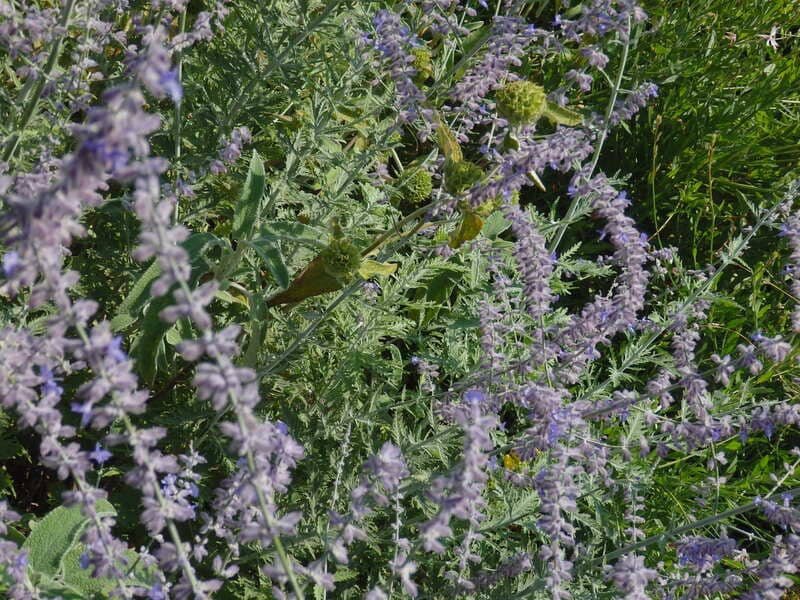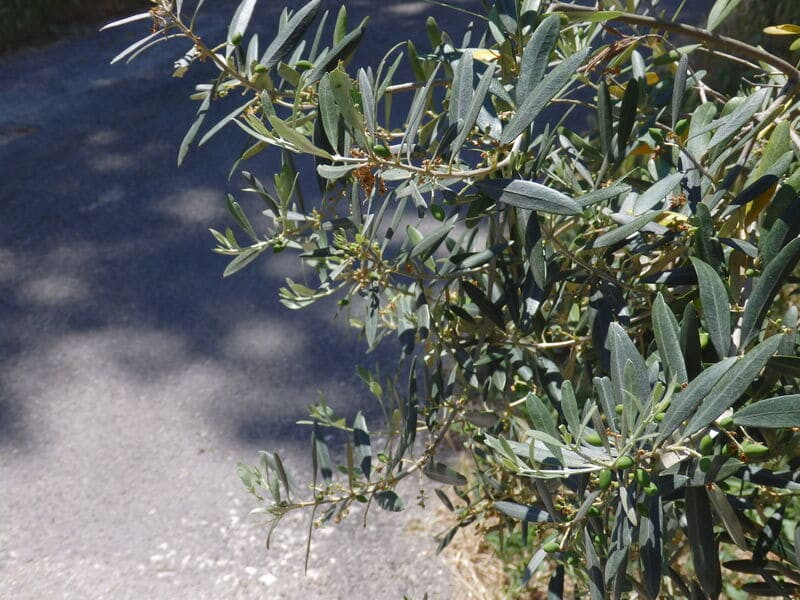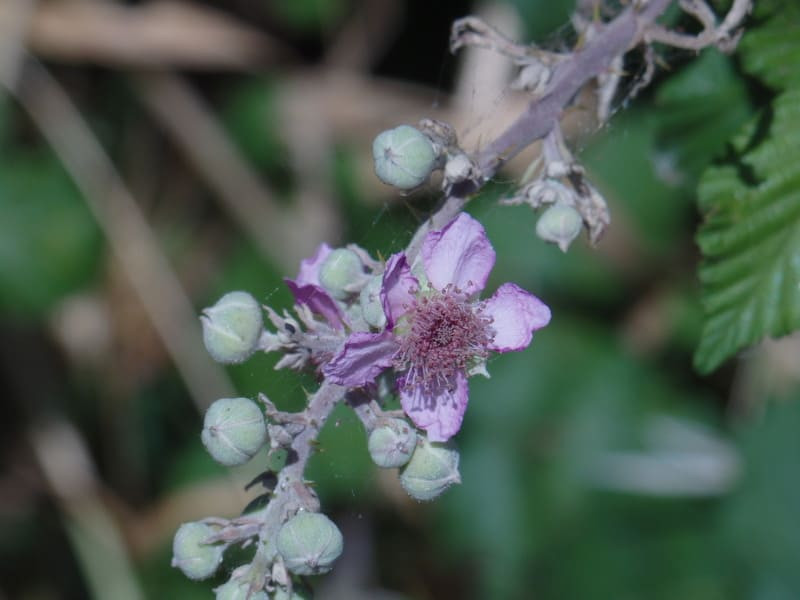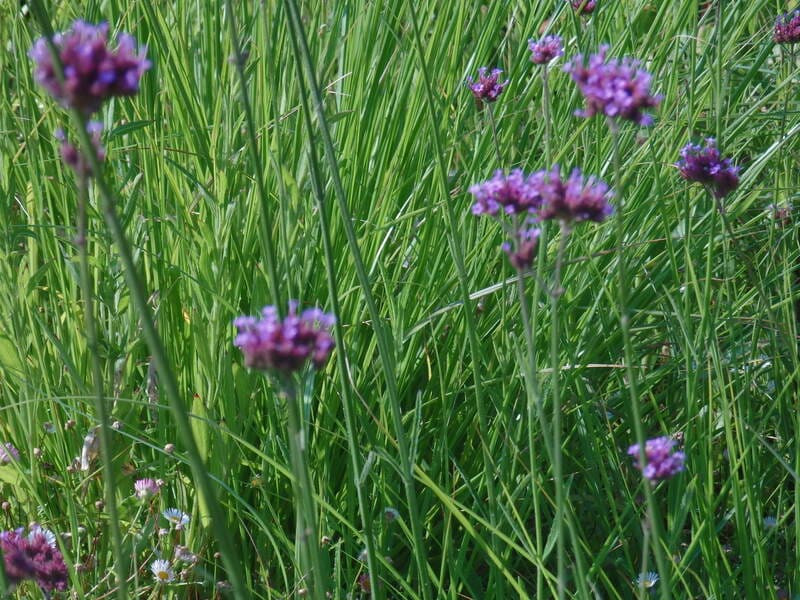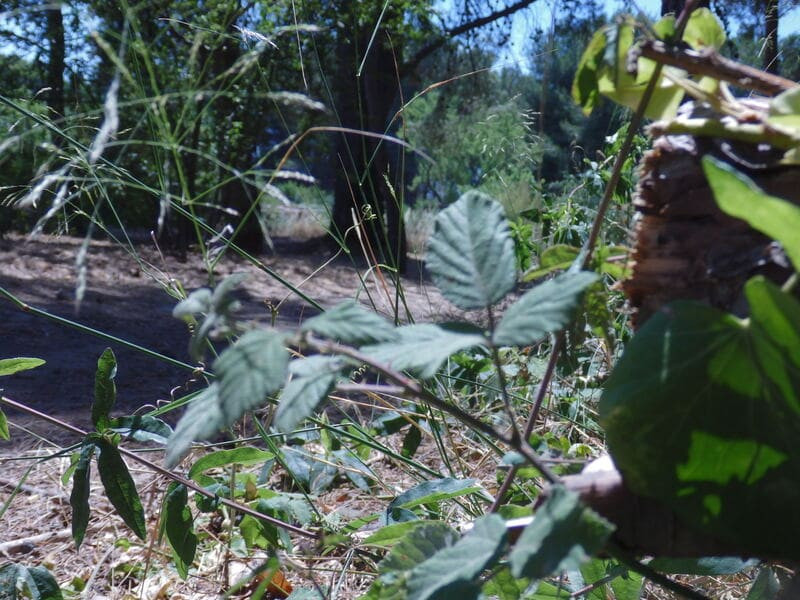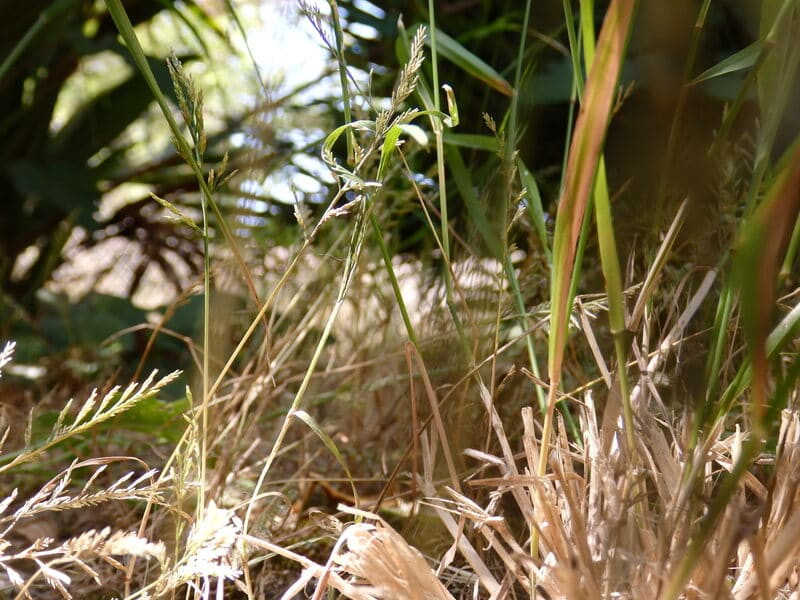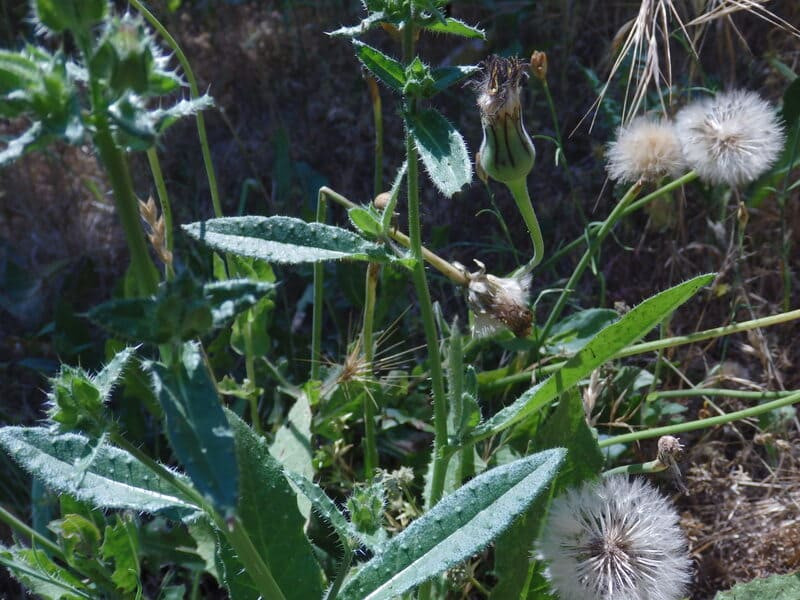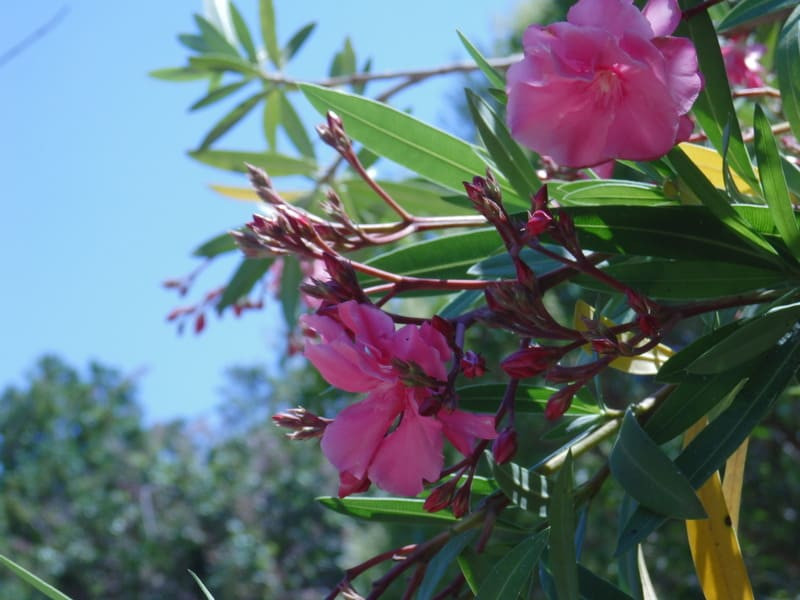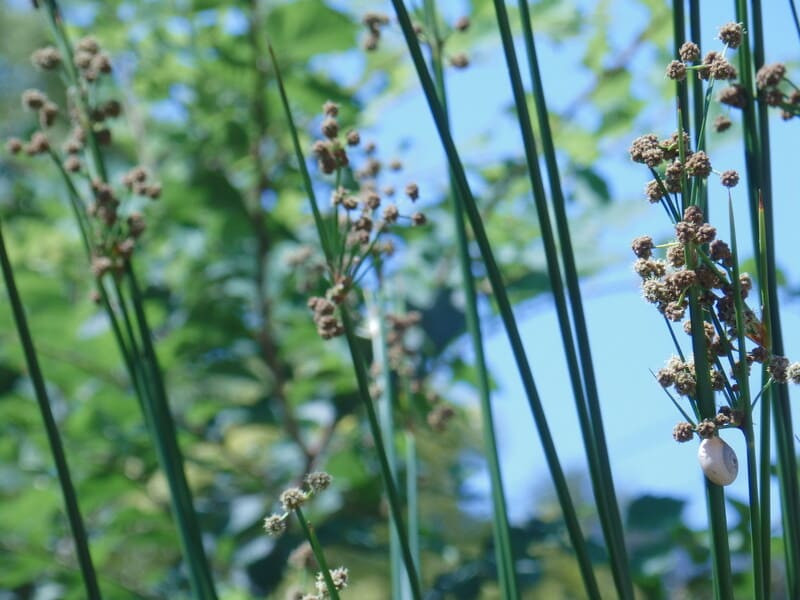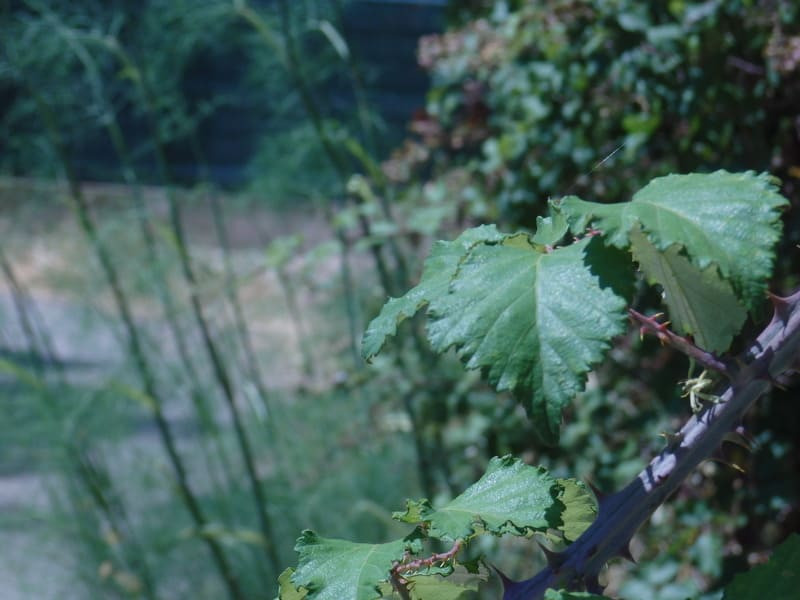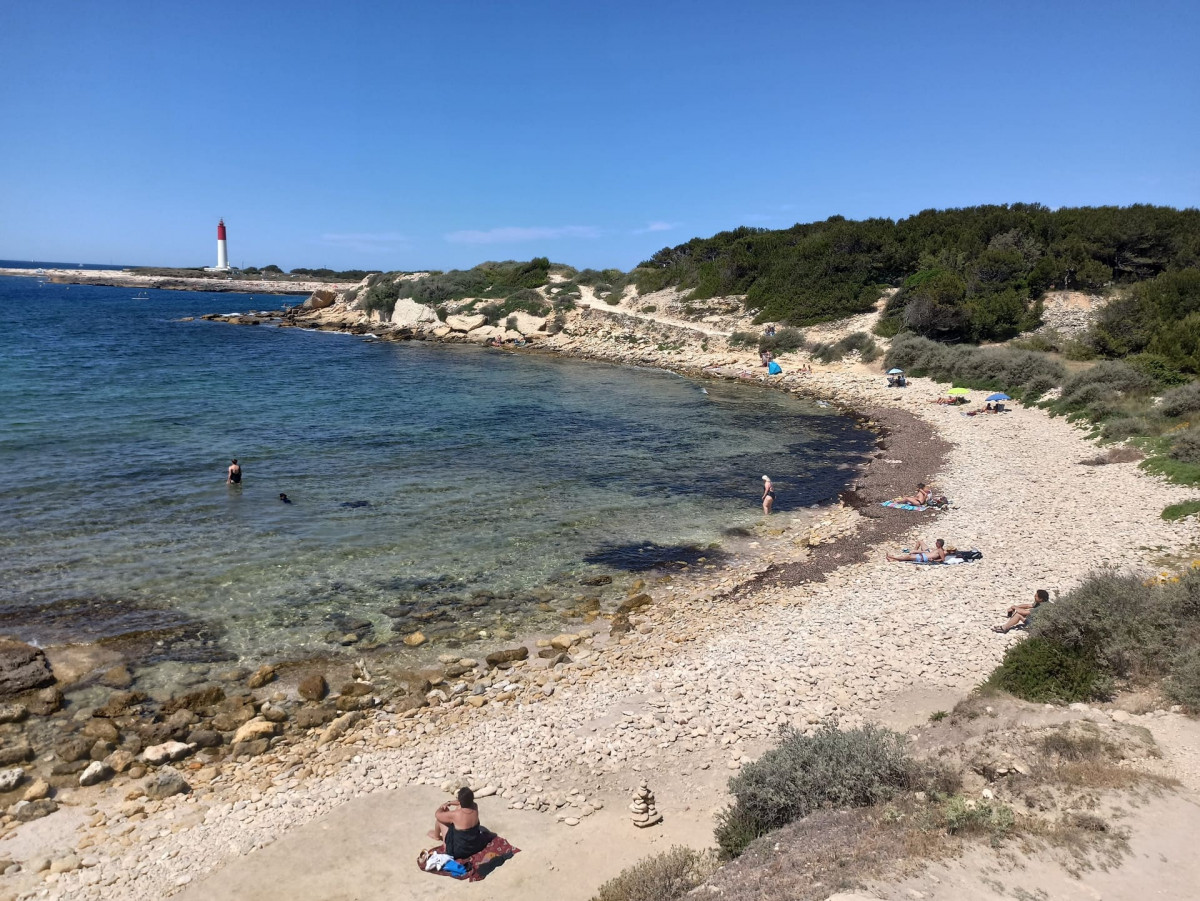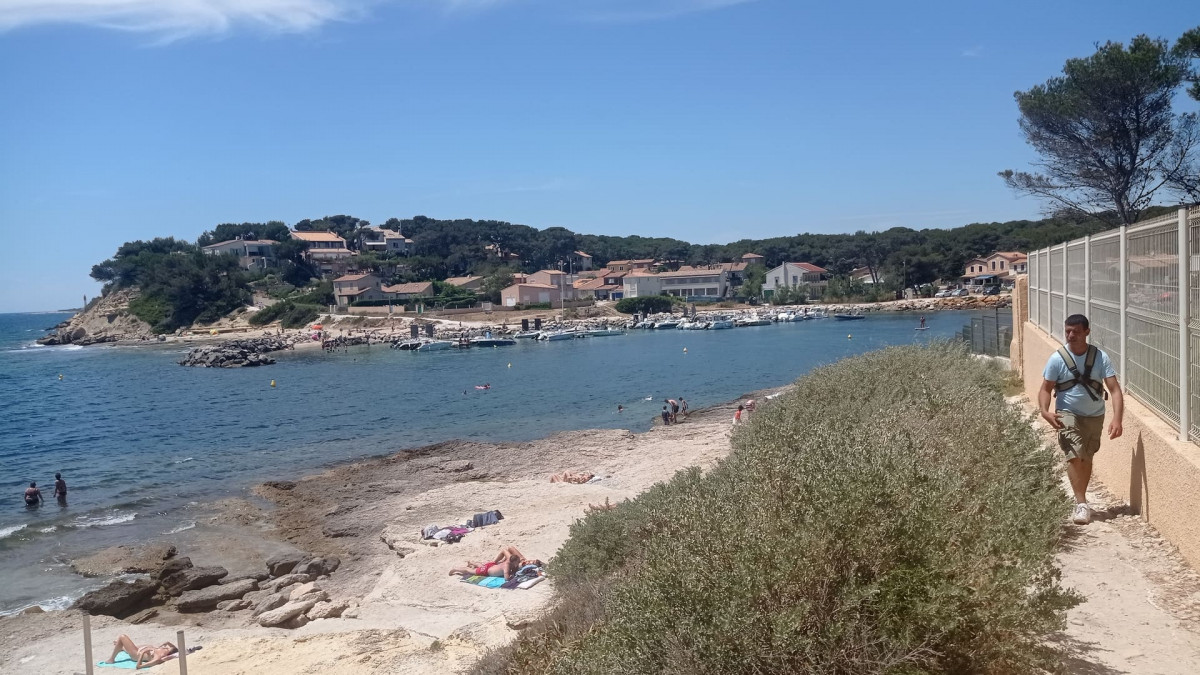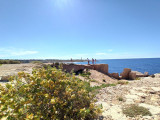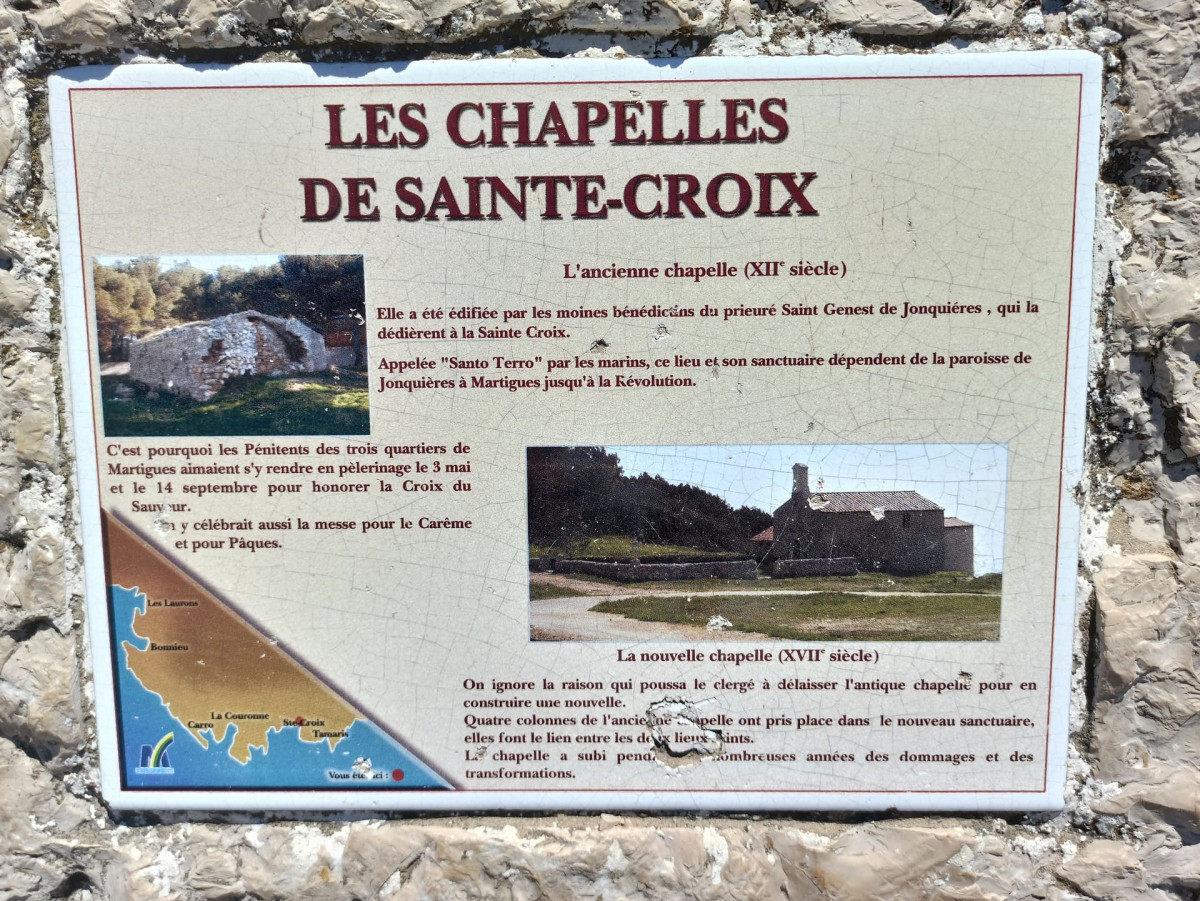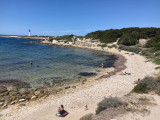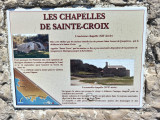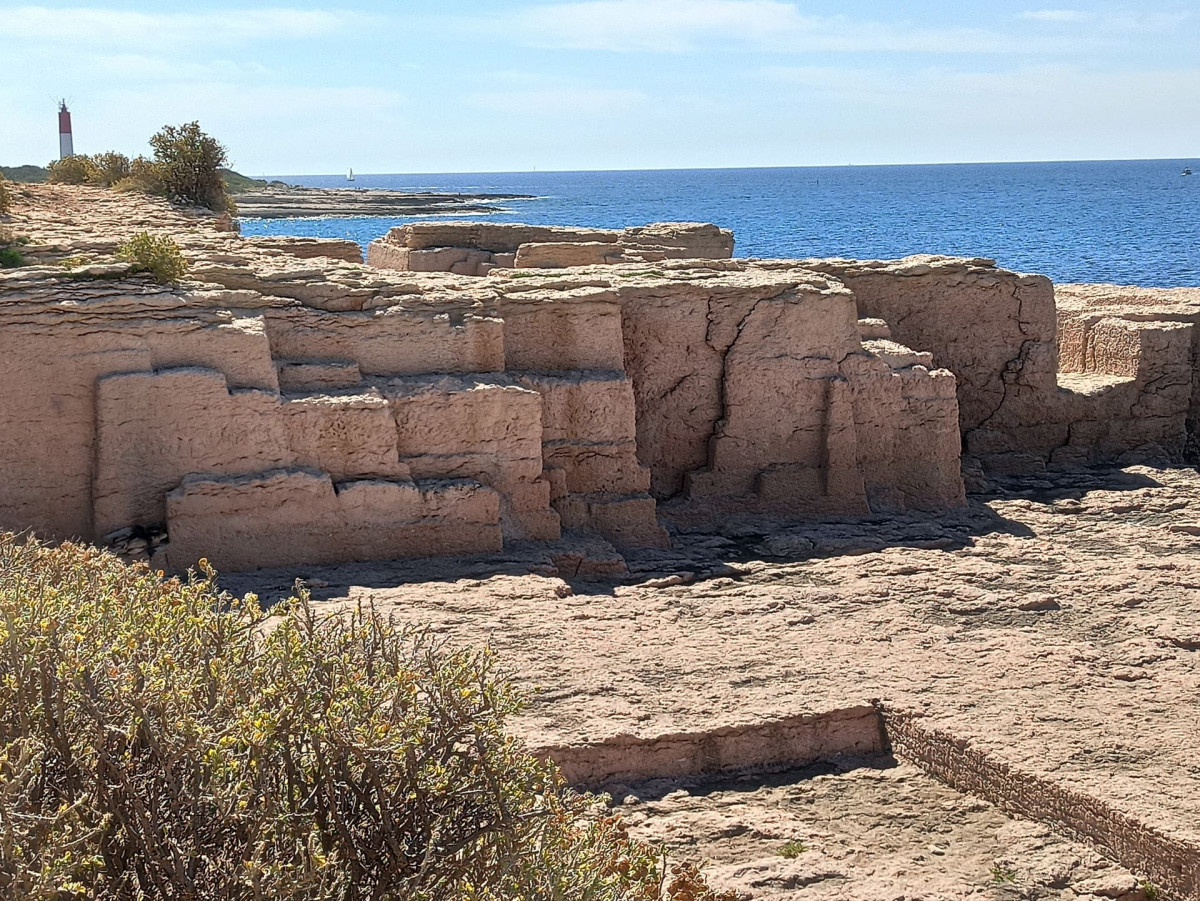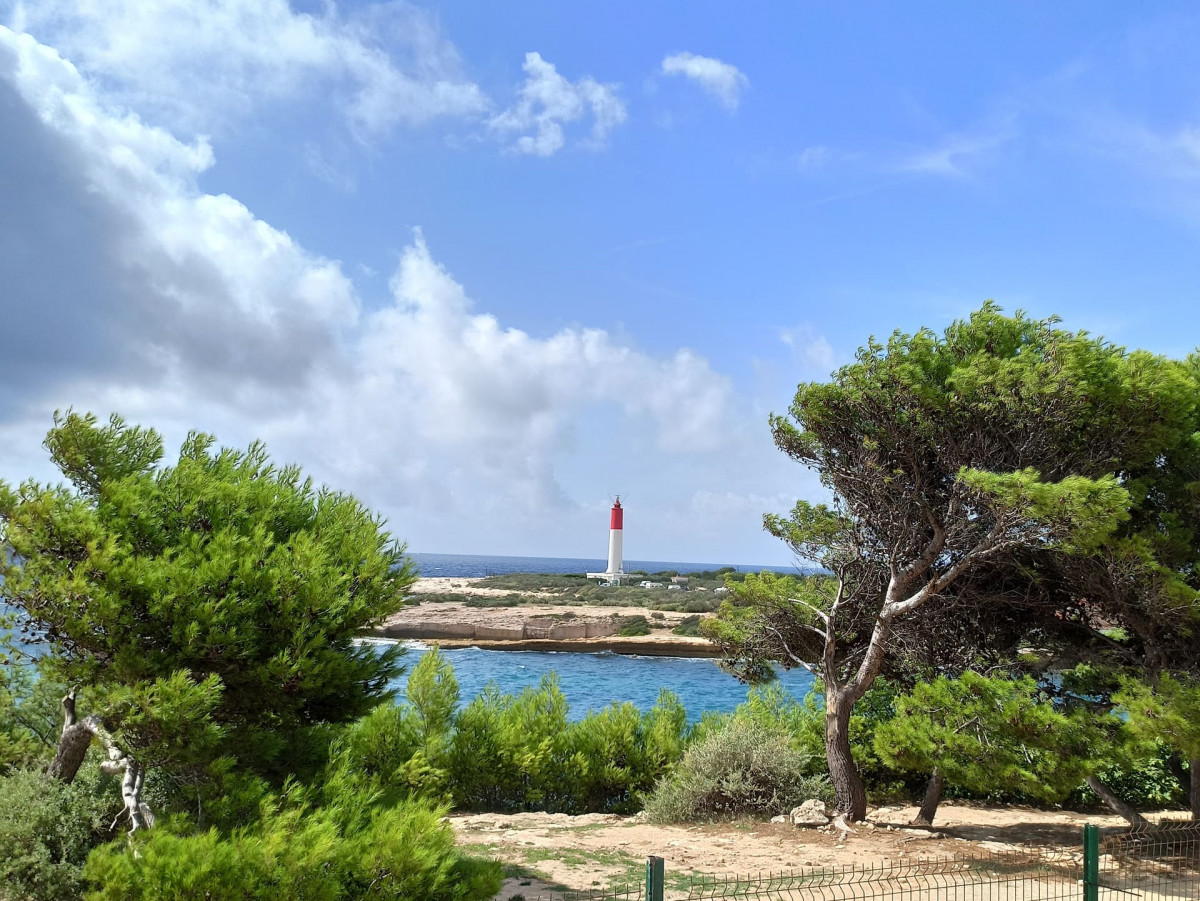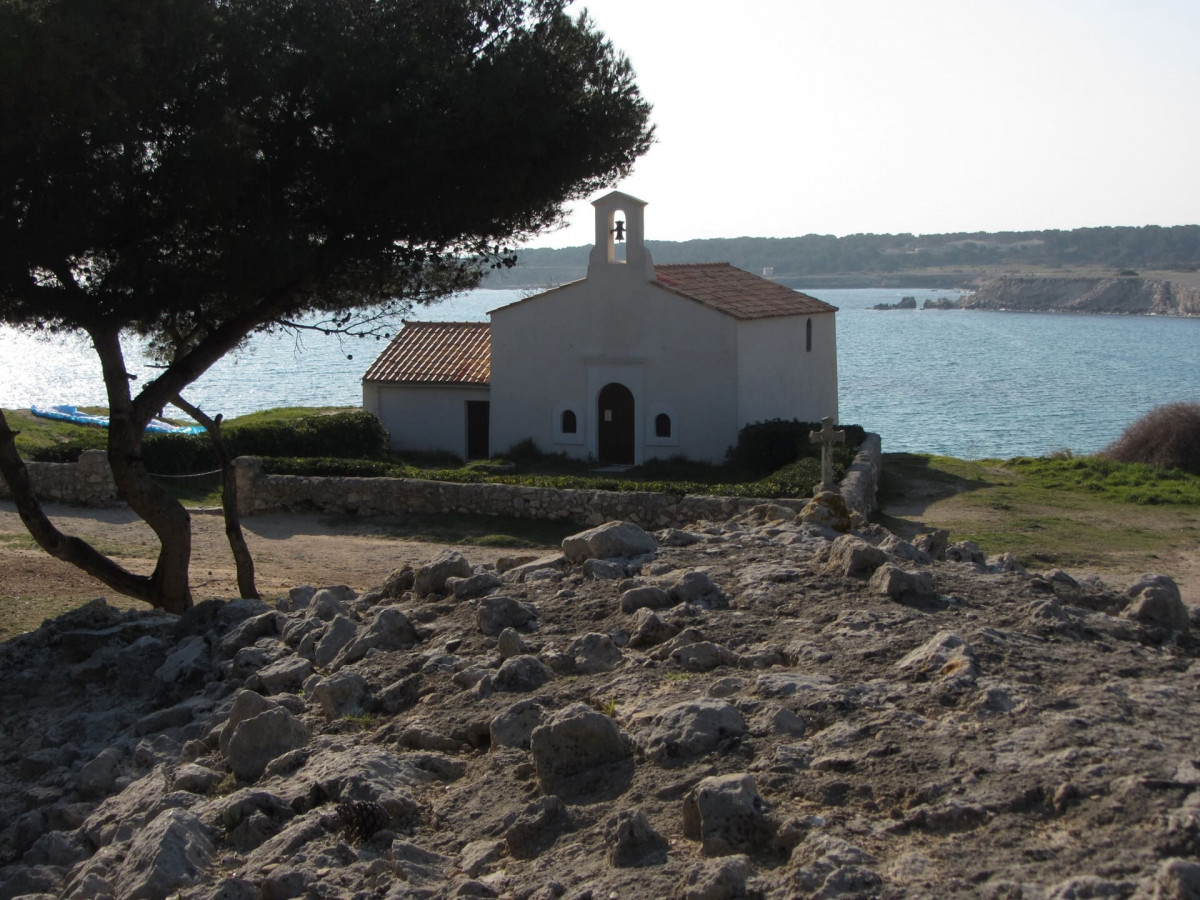The Martégal coastline
Pedestrian sports, Hiking itinerary Interdepartmental InterdepartmentalItinéraire
 Departure/Arrival
Departure/Arrival
 Point of interest
Point of interest
Circuit n° 1
Visiting conditions: Between 1 June and 30 September: access to the forest is regulated by local authorities for your safety and for the preservation of the site. Before heading out, call: 0811 20 13 13 (France only). Information about the opening hours of the site you wish to visit is available: open all day/open only in the morning/completely closed. The degree of forest fire warning (orange-red-black), determined by weather conditions, is published the day before at 6pm at the latest.
Land mammals
Nathusius' pipistrelle
Average length: 4.3 to 5.8 cm
Average weight: 5 to 10 g
It shares its Provencal territory with 25 other species of bats and consumes the equivalent of 3000 mosquitoes each night. She mates with us in autumn and returns to her summer quarters (Germany, Poland or Russia) in order to give birth.
The Etruscan pachyure
Average length: 6 to 8 cm including 3.50 to 3 cm for the tail
Average weight: 1.30 to 2.50 gr
It is the smallest mammal in Europe.
Garenne's rabbit
Average length: 34 to 53 cm
Average weight: 700 gr to 2 kg
Red squirrel
Average length: 40 to 55 cm including 14 to 20 cm for the tail
Average weight: 230 to 480 gr
Red fox
Average length: 1 to 1.40 m including 40 to 50 cm for the tail
Average weight: 6 kg for females, 9 kg for males
The weasel
Average length: 17 to 30 cm including 4 to 12 cm for the tail
Average weight: 40 to 75 g for females, 70 to 130 g for males
The marten
Average length: 65 to 75 cm including 25 to 27 cm for the tail
Average weight: 1.10 to 2.10 kg
Average length: 4.3 to 5.8 cm
Average weight: 5 to 10 g
It shares its Provencal territory with 25 other species of bats and consumes the equivalent of 3000 mosquitoes each night. She mates with us in autumn and returns to her summer quarters (Germany, Poland or Russia) in order to give birth.
The Etruscan pachyure
Average length: 6 to 8 cm including 3.50 to 3 cm for the tail
Average weight: 1.30 to 2.50 gr
It is the smallest mammal in Europe.
Garenne's rabbit
Average length: 34 to 53 cm
Average weight: 700 gr to 2 kg
Red squirrel
Average length: 40 to 55 cm including 14 to 20 cm for the tail
Average weight: 230 to 480 gr
Red fox
Average length: 1 to 1.40 m including 40 to 50 cm for the tail
Average weight: 6 kg for females, 9 kg for males
The weasel
Average length: 17 to 30 cm including 4 to 12 cm for the tail
Average weight: 40 to 75 g for females, 70 to 130 g for males
The marten
Average length: 65 to 75 cm including 25 to 27 cm for the tail
Average weight: 1.10 to 2.10 kg
The coastal fringe
Anemone
Also called "sea tomato", it uses its tentacles to capture the plankton on which it feeds. When it is out of the water, it retracts its tentacles to avoid desiccation.
The monodont
Thanks to its pearly operculum, this snail is completely isolated in its shell, so it can withstand drought.
Limpet
Also called "Arapède" on the Côte Bleue, it moves on the rocks to graze on the algae then returns to its circular shelter which it has dug in the rock. Embedded in this way, thanks to its foot that it uses as a suction cup, it is protected against the waves which cannot take it off against desiccation if it is out of the water.
The littorine
It is a small gastropod of about 5 mm which grazes cyanobacteria (called blue algae) and thus participate in the shaping of the coastline.
Barnacle
It is a crustacean like the crab. When the waves bring seawater, it opens its shell from above and it captures the plankton with the help of its eyelash-shaped legs. It can withstand a temperature of 60 ° C.
The crab
To move on land without fear of drought, it keeps seawater in its gills.
Halophilic plants
Also called "sea tomato", it uses its tentacles to capture the plankton on which it feeds. When it is out of the water, it retracts its tentacles to avoid desiccation.
The monodont
Thanks to its pearly operculum, this snail is completely isolated in its shell, so it can withstand drought.
Limpet
Also called "Arapède" on the Côte Bleue, it moves on the rocks to graze on the algae then returns to its circular shelter which it has dug in the rock. Embedded in this way, thanks to its foot that it uses as a suction cup, it is protected against the waves which cannot take it off against desiccation if it is out of the water.
The littorine
It is a small gastropod of about 5 mm which grazes cyanobacteria (called blue algae) and thus participate in the shaping of the coastline.
Barnacle
It is a crustacean like the crab. When the waves bring seawater, it opens its shell from above and it captures the plankton with the help of its eyelash-shaped legs. It can withstand a temperature of 60 ° C.
The crab
To move on land without fear of drought, it keeps seawater in its gills.
Halophilic plants
The insects
The Foulon Cockchafer
Order: Coleoptera
There are over 300,000 known species of Coleoptera. After 3 years spent underground, its larva becomes one of the most beautiful and largest beetles in Europe.
The Calosome
Order: Coleoptera
It is a hunter of processionary caterpillars which it makes its main food.
Cicadas
Order: Homoptera
Three main species: The Plebeian Cicada is the largest in Europe, of medium size the Orne Cicada is the best known on our coast and the Black Cicada does not exceed 22 mm.
Locusts and grasshoppers
They belong to the order of Orthoptera, they are close relatives that are often confused and yet, compare the antennae!
The Serrated Magician
Order: Orthoptera
With its 9 cm, it is the largest of the European grasshoppers.
Stick insect
Order: Orthoptera
He uses his twig appearance to go unnoticed.
The Empuse
Order: Coleoptera
There are over 300,000 known species of Coleoptera. After 3 years spent underground, its larva becomes one of the most beautiful and largest beetles in Europe.
The Calosome
Order: Coleoptera
It is a hunter of processionary caterpillars which it makes its main food.
Cicadas
Order: Homoptera
Three main species: The Plebeian Cicada is the largest in Europe, of medium size the Orne Cicada is the best known on our coast and the Black Cicada does not exceed 22 mm.
Locusts and grasshoppers
They belong to the order of Orthoptera, they are close relatives that are often confused and yet, compare the antennae!
The Serrated Magician
Order: Orthoptera
With its 9 cm, it is the largest of the European grasshoppers.
Stick insect
Order: Orthoptera
He uses his twig appearance to go unnoticed.
The Empuse
The reptiles
There are over 3000 species of lizards. Locally, we find particular species such as the ocellated lizard which is the largest lizard in France, and the three-toed Seps (three-toed) with rudimentary limbs.
Ocellated Lizard
Family: Lacertidae
Average height: 60 to 80 cm
Montpellier snake
Family: Colubrids
Average height: 170 to 250 cm
Seps
Family: Scincidae
Average length: 35 cm
Green lizard
Family: Lacertidae
Average length: 40 cm
Stepped snake
Family: Colubrids
Average height: 100 to 150 cm
There are over 3000 species of snakes. The vipers being absent from our department, the local species are essentially harmless snakes including "the Montpellier snake" which is the largest snake in France.
Ocellated Lizard
Family: Lacertidae
Average height: 60 to 80 cm
Montpellier snake
Family: Colubrids
Average height: 170 to 250 cm
Seps
Family: Scincidae
Average length: 35 cm
Green lizard
Family: Lacertidae
Average length: 40 cm
Stepped snake
Family: Colubrids
Average height: 100 to 150 cm
There are over 3000 species of snakes. The vipers being absent from our department, the local species are essentially harmless snakes including "the Montpellier snake" which is the largest snake in France.
Cetaceans
It is with surprise and enthusiasm that the inhabitants of Carro welcomed in the spring of 1987 an extraordinary tourist, a runner-up who was quickly baptized Fanny in order to remain in a regional setting. The cetacean having taken up residence on the spot, a team of scientists immediately set up an observatory in order to take advantage of the exceptional chance that presented itself, and thus monitor the movements of the animal in total freedom.
Risso's dolphin
Average length: 3.50 m
Average weight: 300 kg
Fin whale
Average length: 18 m
Average weight: 40 tons
The bottlenose dolphin
Average length: 3 m
Average weight: 250 kg
The blue and white dolphin
Average length: 2 m
Average weight: 50 kg
The pilot whale
Average length: 5 m
Average weight: 2 tons
The sperm whale
Average length: 13 m
Average weight: 25 tons
Risso's dolphin
Average length: 3.50 m
Average weight: 300 kg
Fin whale
Average length: 18 m
Average weight: 40 tons
The bottlenose dolphin
Average length: 3 m
Average weight: 250 kg
The blue and white dolphin
Average length: 2 m
Average weight: 50 kg
The pilot whale
Average length: 5 m
Average weight: 2 tons
The sperm whale
Average length: 13 m
Average weight: 25 tons
The seabed
Sandy bottoms
Sea cucumber, cerianth and sole.
Sea cucumbers, a close relative of sea urchins, feed by filtering the sand. Only the sole's eyes are visible when it is buried in the sand. The cérianthe is an anemone which retracts at the slightest alert into a fibrous tube which it forms itself with its mucus.
Rocky bottoms
The octopus, the moray eel and the scorpion fish.
The octopus and the lionfish hide in the interstices of the rocks whose colors they adopt so as not to be seen by their future prey, or a possible enemy. The bite of the moray eel and the bite of the lionfish are very painful.
Posidonia meadows
The large mother-of-pearl, the saupe and the seahorse.
Partly buried in the sand and camouflaged between the leaves of Posidonia, the large mother-of-pearl, this giant lamellibranch, has nevertheless become rare by dint of collection. A vegetarian fish, the saupe lives in schools which evolve in tight formation. The seahorse, very comfortable in seagrass beds, clings to the leaves of Posidonia using its tail.
Sea cucumber, cerianth and sole.
Sea cucumbers, a close relative of sea urchins, feed by filtering the sand. Only the sole's eyes are visible when it is buried in the sand. The cérianthe is an anemone which retracts at the slightest alert into a fibrous tube which it forms itself with its mucus.
Rocky bottoms
The octopus, the moray eel and the scorpion fish.
The octopus and the lionfish hide in the interstices of the rocks whose colors they adopt so as not to be seen by their future prey, or a possible enemy. The bite of the moray eel and the bite of the lionfish are very painful.
Posidonia meadows
The large mother-of-pearl, the saupe and the seahorse.
Partly buried in the sand and camouflaged between the leaves of Posidonia, the large mother-of-pearl, this giant lamellibranch, has nevertheless become rare by dint of collection. A vegetarian fish, the saupe lives in schools which evolve in tight formation. The seahorse, very comfortable in seagrass beds, clings to the leaves of Posidonia using its tail.
Sea birds
Sandwich Tern
Family: Sternidae
Average wingspan: 100 cm
White-backed gull
Family: Laridae
Average wingspan: 150 cm
Pond crazy
Family: Sulidae
Average wingspan: 170 cm
The great cormorant
Family: Phalacrocoracidae
Average wingspan: 150 cm
Black-necked grebe
Family: Podicipédidae
Average wingspan: 60 cm
Common tern
Family: Sternidae
Average wingspan: 90 cm
Black-headed gull
Family: Laridae
Average wingspan: 100 cm
Family: Sternidae
Average wingspan: 100 cm
White-backed gull
Family: Laridae
Average wingspan: 150 cm
Pond crazy
Family: Sulidae
Average wingspan: 170 cm
The great cormorant
Family: Phalacrocoracidae
Average wingspan: 150 cm
Black-necked grebe
Family: Podicipédidae
Average wingspan: 60 cm
Common tern
Family: Sternidae
Average wingspan: 90 cm
Black-headed gull
Family: Laridae
Average wingspan: 100 cm
The seaweeds
Algae are marine plants capable of developing their own organic matter from mineral elements and carbon dioxide dissolved in water. The sun for its part provides the energy necessary for this phenomenon called photos synthesis. The algae, rich in their diversity, are characterized by upright, hollow morphologies ... and various red, green and brown colors. Most algae are attached to the substrate by spikes, so they can resist waves and ocean currents.
Red algae, brown algae, green algae, calcareous algae
Esquinade
Also called "spider crab", it is a crustacean about 20 cm long. With its pliers, it cuts the algae which it then fixes on its shell bristling with thorns until it becomes almost invisible.
Red algae, brown algae, green algae, calcareous algae
Esquinade
Also called "spider crab", it is a crustacean about 20 cm long. With its pliers, it cuts the algae which it then fixes on its shell bristling with thorns until it becomes almost invisible.
The vegetation
The original forest
Holm oak and pubescent oak. Aleppo pine and umbrella pine.
The forest of Provençal origin, on the limestone soil, consists of holm oaks, pubescent oaks and some Aleppo and Parasol pines.
The brachiopod lawn
Brachiopod and Thyme.
Scrubland
Kermes oak, Gorse, Rosemary.
The pine forest and the scrubland allow the re-establishment of the oak forest whose young plants need shade to develop.
Holm oak and pubescent oak. Aleppo pine and umbrella pine.
The forest of Provençal origin, on the limestone soil, consists of holm oaks, pubescent oaks and some Aleppo and Parasol pines.
The brachiopod lawn
Brachiopod and Thyme.
Scrubland
Kermes oak, Gorse, Rosemary.
The pine forest and the scrubland allow the re-establishment of the oak forest whose young plants need shade to develop.
Plants
Salicornia
Arthrocnemum glaucum. Chenopodiaceae family.
Obione
Halimione portulacoides. Chenopodiaceae family.
Sea fennel
Crithmum maritimum. Family of Umbelliferae.
Dune panicaut
Eryngium maritimum. Family of Umbelliferae.
Horned poppy
Glaucum flavum. Papaveraceae family.
Saladelles
Limonium minutum. Family of Plombaginaceae.
Halophilic plants have adapted by increasing their amount of salt in order to resist the presence of salt water in the soil or leaves.
Arthrocnemum glaucum. Chenopodiaceae family.
Obione
Halimione portulacoides. Chenopodiaceae family.
Sea fennel
Crithmum maritimum. Family of Umbelliferae.
Dune panicaut
Eryngium maritimum. Family of Umbelliferae.
Horned poppy
Glaucum flavum. Papaveraceae family.
Saladelles
Limonium minutum. Family of Plombaginaceae.
Halophilic plants have adapted by increasing their amount of salt in order to resist the presence of salt water in the soil or leaves.
Presentation
The coastal path presents natural spaces of exceptional ecological diversity and landscape quality.
Departing from Les Laurons or the village of Carro, walk along the Mediterranean coast to discover exceptional landscapes! A nice 13km walk (one way) to the jewel of Sainte-Croix beach and its chapel. All along the route, discover the history of the Côte Bleue coastline, the fauna and flora that inhabit it as well as the archaeological traces.
The trail starts at the EDF thermal power station. Built in the 1970s, this site was intensely used until 1982 with 250 people employed. Today it still works and is used as needed.
On the route, you will see several casemates and fortifications dating from the Second World War. These buildings, evidence of the past, guarded the Mediterranean shores against invaders and/or to accommodate Allied troops. Between Lavéra and La Couronne, no less than 99 blockhouses, 100 structures for large-caliber guns and 85 heavy machine gun sites have been identified.
Walking the coastal path also means learning more about the dozens of shipwrecks that have taken place on the coast. The area being very little protected from the wind, the freight boats did not survive there. We are talking here about the Greek era, antiquity and the Middle Ages.
Finally, you may come across them on your way, the coastal path is populated by mammals (red squirrels, red foxes, weasels, weasels and wild rabbits), insects (cicadas, green grasshoppers, stick insects, crickets), reptiles (lizards, snakes, seps), seabirds (tern, gull, grebe, gull, great cormorant).
On the ground, you will see continental karsts formed by the movements of the sea. Today, these rocks with holes serve as shelters for plant and animal species. The landscape you will travel through dates back 16 to 20 million years, which gives it a special appearance. You will recognize it by its Mediterranean vegetation (oaks, pines, thyme, rosemary, rush) and its salt-tolerant plants (glasswort, sea fennel, obione, panicaut des dunes).
The heritage you absolutely must see during your walk:
- In Carro: the Croix de Carro located on the port in memory of the missing sailors, the lifeboat of the SNSM station in operation since 1868, the quarries of Baou Tailla (one of the best preserved coastal quarries) having served to the extraction of stone by the quarrymen who lived in La Couronne / Carro.
- At La Couronne: the Semaphore, one of the last in France built in 1887 and still in operation, the Cap Couronne lighthouse made famous for appearing regularly in the background in the TF1 series "Camping Paradis" whose place of filming is located nearby, the traces of a Gallic village on the Pointe de l'Arquet dating from the 6th century and probably destroyed by a military attack by the Greeks of Marseille.
- In Sainte-Croix: the beaches on which the Duchess of Berry landed in 1932 from Italy on the ship "Carlo Alberto" and helped by two sailors from La Couronne, the Chapel of Sainte-Croix called "Santo Terro / Holy Land" by sailors, traces of a Gallic village in Tamaris dating from the 6th century BC.
At the end of the route, access the Grand Vallat reed bed. This is a wetland where reeds grow which shelter a very varied fauna: mammals, birds, amphibians, insects. Coypus, tree frogs, beetles, snakes, moorhens, water rails and gerris are the main inhabitants.
The trail starts at the EDF thermal power station. Built in the 1970s, this site was intensely used until 1982 with 250 people employed. Today it still works and is used as needed.
On the route, you will see several casemates and fortifications dating from the Second World War. These buildings, evidence of the past, guarded the Mediterranean shores against invaders and/or to accommodate Allied troops. Between Lavéra and La Couronne, no less than 99 blockhouses, 100 structures for large-caliber guns and 85 heavy machine gun sites have been identified.
Walking the coastal path also means learning more about the dozens of shipwrecks that have taken place on the coast. The area being very little protected from the wind, the freight boats did not survive there. We are talking here about the Greek era, antiquity and the Middle Ages.
Finally, you may come across them on your way, the coastal path is populated by mammals (red squirrels, red foxes, weasels, weasels and wild rabbits), insects (cicadas, green grasshoppers, stick insects, crickets), reptiles (lizards, snakes, seps), seabirds (tern, gull, grebe, gull, great cormorant).
On the ground, you will see continental karsts formed by the movements of the sea. Today, these rocks with holes serve as shelters for plant and animal species. The landscape you will travel through dates back 16 to 20 million years, which gives it a special appearance. You will recognize it by its Mediterranean vegetation (oaks, pines, thyme, rosemary, rush) and its salt-tolerant plants (glasswort, sea fennel, obione, panicaut des dunes).
The heritage you absolutely must see during your walk:
- In Carro: the Croix de Carro located on the port in memory of the missing sailors, the lifeboat of the SNSM station in operation since 1868, the quarries of Baou Tailla (one of the best preserved coastal quarries) having served to the extraction of stone by the quarrymen who lived in La Couronne / Carro.
- At La Couronne: the Semaphore, one of the last in France built in 1887 and still in operation, the Cap Couronne lighthouse made famous for appearing regularly in the background in the TF1 series "Camping Paradis" whose place of filming is located nearby, the traces of a Gallic village on the Pointe de l'Arquet dating from the 6th century and probably destroyed by a military attack by the Greeks of Marseille.
- In Sainte-Croix: the beaches on which the Duchess of Berry landed in 1932 from Italy on the ship "Carlo Alberto" and helped by two sailors from La Couronne, the Chapel of Sainte-Croix called "Santo Terro / Holy Land" by sailors, traces of a Gallic village in Tamaris dating from the 6th century BC.
At the end of the route, access the Grand Vallat reed bed. This is a wetland where reeds grow which shelter a very varied fauna: mammals, birds, amphibians, insects. Coypus, tree frogs, beetles, snakes, moorhens, water rails and gerris are the main inhabitants.
Opening period (s)All year round daily.
Subject to favorable weather.
Subject to favorable weather.
Practical information
- Route :
- Signposted route
- Distance (km) : 13
- Daily duration (minutes) : 180
- Route : Aller / Itinerance
- Parking :
- Free car park
- Levels of sporting experience :
- Level bue - Medium
- Natures field :
- Rock
- Stone
- Clay
- Delicate passages :
- Be careful, this hike takes a small path which can be tricky on the descent to Saint Croix beach.
Features/Theme
- Leisure facilities :
- Picnic area
- Orientation board
- Environments :
- Village 2 km away
Download
Pics
We also suggest...



